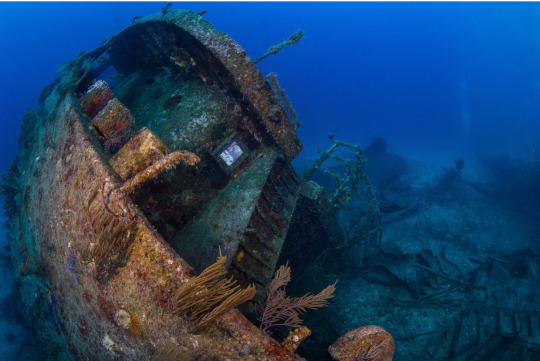#I can't find that anime that was like 'there's these huge artificial coral reefs in space... and the only ones who fish there are teenagers
Text
It's kind of hilarious like, for example, when Serial Experiments Lain introduces all those conspiracy concepts and the main cast is a bunch of average teenage girls. I do honestly wonder why is anime/manga like that sometimes. All sorts of weird, fascinating, esoteric concepts, but it's always with high-schoolers. High school is an undeniable fact of life.
#cosas mias#or those franchises which are like 'actually war tanks are really popular among teenage girls lately'#I can't find that anime that was like 'there's these huge artificial coral reefs in space... and the only ones who fish there are teenagers#but it's like that. it's always like that I swear I try to read stuff that is not like that but it always turns to high-school somehow
12 notes
·
View notes
Text
NATURE & SHIPWRECKS (unit #5 - freestyle)
Hello friends,
We are back again this week with the most exciting prompt yet: no prompt! I am taking this opportunity to talk about my biggest childhood interest… SHIPWRECKS!
You might be wondering how this relates to nature at all but deep-sea shipwrecks are biodiversity hubs. I have always been interested in shipwrecks because I am both terrified and in awe of them. My main fascination is with how such an inorganic and visually man-made object is completely emersed by aquatic life and fits so well in an ecosystem it was never intended to be in.

STOCKTREK IMAGES. (n.d.). A sunken ship lays on its side near Grand Bahama Island, Bahamas. How do we find shipwrecks—and who owns them? National Geographic. Retrieved from https://www.nationalgeographic.com/history/article/how-do-we-find-shipwrecks-and-who-owns-them.
Shipwrecks are considered “islands of biodiversity” because they offer a structure for an incredibly wide variety of species to inhabit, which creates pockets of very high biodiversity, acting as artificial reefs (Hamdan et al., 2021). Imagine a sandy sea floor with not much going on besides some small rocks and vegetation, now put a huge stationary shipwreck there, and eventually, many species will call this new isolated habitat their new home. Many shipwrecks are dripping with so many species that you cannot even see bare metal anymore.
It is clear from photos that there are lots of different fish, vegetation, and corals that inhabit old shipwrecks, but we are missing a very important aspect of shipwreck ecosystems: the micro-organism colonies! In our defense, we can't see them but they make up a huge portion of biodiversity. Microorganisms establish and preserve shipwrecks as artificial reefs, allowing other species to thrive in/on shipwrecks. It is amazing how much power the tiny species hold and how influential they are to full ecosystems. (Hamdan et al., 2021)

Murat. (n.d.). Bream Fish around the shipwreck. How do we find shipwrecks—and who owns them? Adobe Stock Images. Retrieved from https://www.bristolaquarium.co.uk/animal-stories/animals-that-find-a-home-in-sunken-ships/
I have never had the opportunity to visit a shipwreck other than kayaking over top of a boiler. I love watching videos of people diving to explore shipwrecks, although I can't imagine ever doing it myself. I am incredibly curious to hear if anyone has done this? I would absolutely love to hear your experiences! We (Ontario locals) live in the perfect place to go shipwreck diving because the Great Lakes have cold water and low salinity which are fanatics conditions for the preservation of shipwrecks. The Great Lakes are regarded as one of the best shipwreck diving spots in the world. (Harrington, 2019)
I have always found shipwrecks interesting because of the duality that the vessel wasn't strong enough to complete its voyage but it is strong enough to be preserved underwater for (possibly) hundreds of years, sometimes in near-perfect condition. However, the shipwrecks of the Great Lakes are in trouble!! Invasive species of the Great Lakes like zebra mussels (Dreissena polymorpha) and quagga mussels (Dreissena rostriformis bugensis) are threatening our beautifully preserved nuggets of history. These filter feeders can cause damage through heavy weight and even corrosion of some metals, if enough pile up. Additionally, they release carbon dioxide which can severely alter water quality and the conditions that help preserve shipwrecks. It is insane that these huge structures that can last up to thousands of years can be threatened by something as small and seemingly passive as mussels. (Harrington, 2019)
Thanks for reading, hopefully you see shipwrecks from a slightly different perspective! Who knew shipwrecks were so intertwined with nature (I did because I am a nerd who loves shipwrecks)!
References
Hamdan, L. J., Hampel, J. J., Moseley, R. D., Mugge, R. L., Ray, A., Salerno, J. L., & Damour, M. (2021, April 22). Deep-sea shipwrecks represent island-like ecosystems for marine microbiomes. OUP Academic. https://doi.org/10.1038/s41396-021-00978-y
Harrington, M. (2019, November 20). Aquatic invasive species threaten shipwreck preservation in the Great Lakes: Wisconsin sea grant. Wisconsin Sea Grant | University of Wisconsin. https://www.seagrant.wisc.edu/blog/aquatic-invasive-species-threaten-shipwreck-preservation-in-the-great-lakes/
18 notes
·
View notes